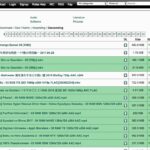Have you ever heard of “transport mode” on a car and wondered what it means? As car repair experts at keyfobprog.com, we often encounter questions about various car functionalities, and transport mode is one that sometimes puzzles vehicle owners. This article will clarify what transport mode is, why it exists, and how it might affect your car.
Decoding Transport Mode: More Than Just a Setting
Transport mode, also known as “shipping mode” or “factory mode,” is a special setting activated in new vehicles before they leave the factory. Its primary purpose is to minimize battery drain during shipping and storage. When a car sits idle for weeks or months during transportation from the manufacturing plant to dealerships, and then on the dealer lot, it can experience significant battery discharge due to the numerous electronic systems that are always active, even when the car is turned off.
Transport mode effectively puts the vehicle into a low-power state. It deactivates or limits the functionality of many electronic systems, such as:
- Infotainment system: Radio, navigation, and other media functions.
- Interior and exterior lighting: Courtesy lights, headlights, taillights (except for essential safety lighting in some cases).
- Central locking system: Remote key functions, alarm system.
- Various control units: Reducing overall electrical activity.
Image alt text: Quote icon representing expert advice on car transport mode.
Why is Transport Mode Necessary?
The need for transport mode boils down to battery preservation. Modern cars are packed with electronics that constantly draw power. Without transport mode, a new car’s battery could be significantly depleted, or even fully discharged, by the time it reaches the customer. This could lead to:
- Dead battery upon delivery: A negative first impression for the customer.
- Reduced battery lifespan: Deep discharge can damage a car battery.
- Starting problems at the dealership: Requiring jump starts or battery replacements before sale.
By minimizing power consumption, transport mode ensures that the car arrives at the dealership with a healthy battery, ready for pre-delivery inspection and customer handover.
How Does Transport Mode Affect Your Car?
While beneficial during shipping, transport mode needs to be deactivated once the car reaches the dealership. If your car is accidentally left in transport mode, or if it’s not properly deactivated, you might experience several issues:
- Non-functional remote key: You may need to use the physical key to unlock the car.
- Disabled alarm system: The car’s alarm might not arm or function correctly.
- Limited electronic features: Radio, infotainment screen, interior lights, and other features might be disabled or work intermittently.
- Error messages on the dashboard: Some cars may display a warning message indicating transport mode is active.
In rare cases, if a car is mistakenly delivered to a customer still in transport mode, these issues can be confusing and frustrating.
Deactivating Transport Mode
Deactivation of transport mode is typically part of the pre-delivery inspection (PDI) process at the dealership. Technicians use specialized diagnostic tools to communicate with the car’s computer and disable transport mode.
In some vehicle models, there might be a specific sequence of button presses or key operations that can deactivate transport mode. However, these procedures vary greatly between manufacturers and models and are usually intended for trained technicians.
If you suspect your car might be in transport mode after delivery, it’s best to contact your dealership. They can quickly diagnose and deactivate transport mode if necessary, ensuring all your car’s features function correctly. For more complex car electronic issues, remember keyfobprog.com is here to provide expert assistance and solutions.
